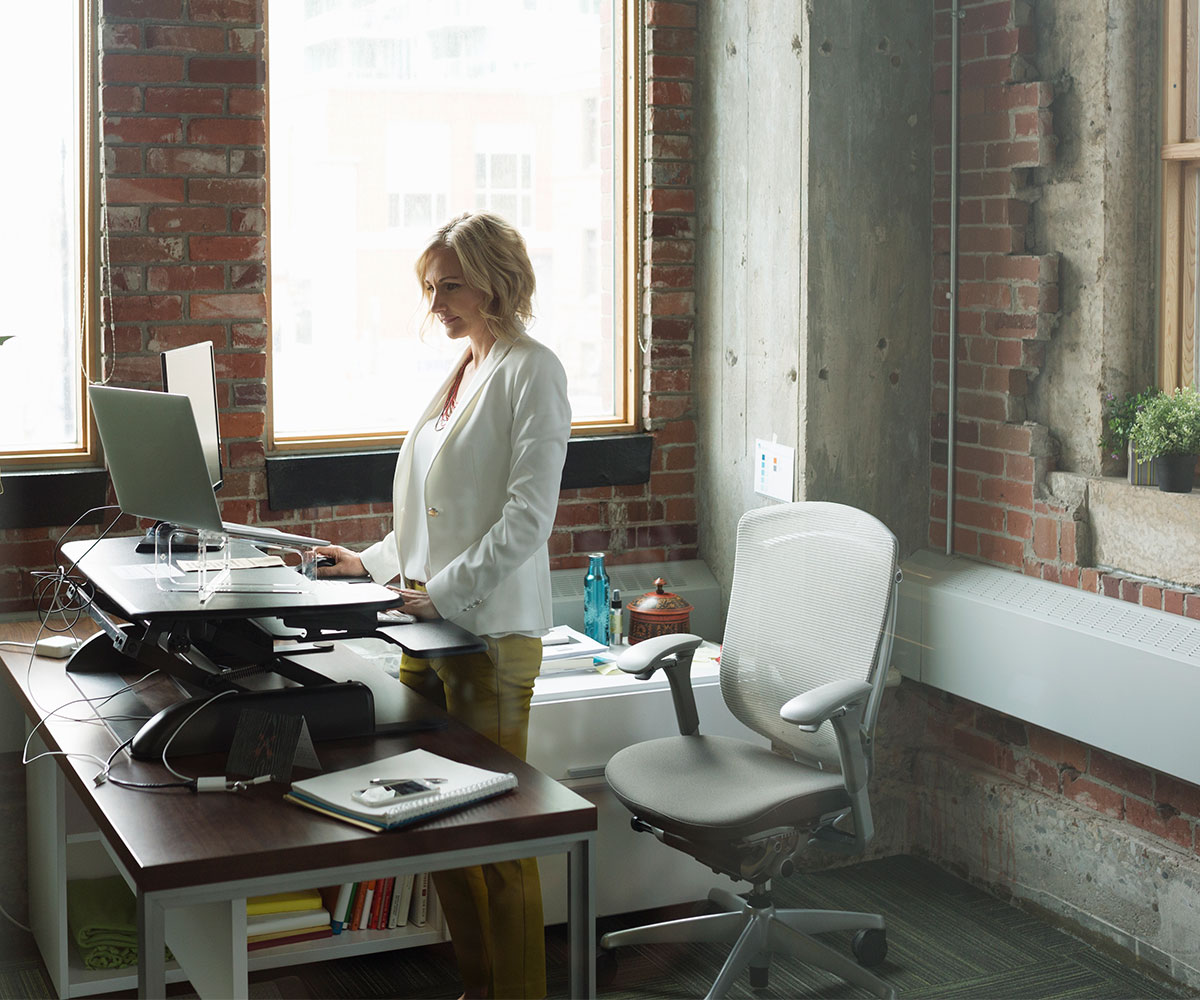If you wander around the average workplace today, chances are you’ll stumble on a few sights: co-workers discussing the latest Married at First Sight episode, tapping at keyboards and cute pet pictures hanging in cubicles.
You may also see a variety of work stations – including standing desks.
It seems the more we learn about the negative health consequences of sedentary behaviour (obesity, type 2 diabetes, heart disease), the more prevalent standing desks become.
While standing desks have been used to help reduce back pain and time spent sitting, new research published in the journal Ergonomics says prolonged standing can actually have harmful effects on the body.
The study, undertaken by researchers at Curtin University in Australia, looked at a sample group of 20, who stood at desks and worked.
After two hours they found discomfort increased in all body areas. They also experienced a reduced attention reaction time and a deteriorated mental state – but at least their creative problem-solving improved.

Speaking to The Telegraph, physiotherapy expert, Alan Taylor, said: “The bottom line is that this expansion [of standing desks] has been driven more by commercial reasons than scientific evidence. But the evidence is catching up, and it’s showing there are some drawbacks.”
Taylor says rather than using a standing desk workers should take more walks at work – even if it’s just to make a cuppa.
If you want to increase your activity levels while at work – and you should – there are some more beneficial activities you can try.
The Ministry of Health says workers should be encouraged to be as active as possible and recommends:
Using the stairs rather than elevators and escalators
Standing up to stretch often and when taking phone calls
Standing during meetings
Taking the time to walk to colleagues instead of emailing
Having five minute activity breaks every hour
Walking at lunchtime and even organising jogging groups
Using active transport to get to work such as cycling or walking
Participation in events such as Walk 2 Work day and Bike to Work day.


